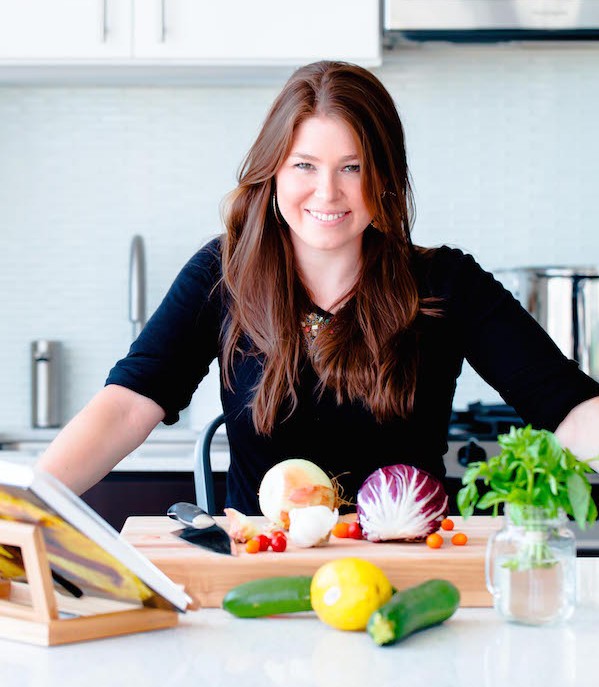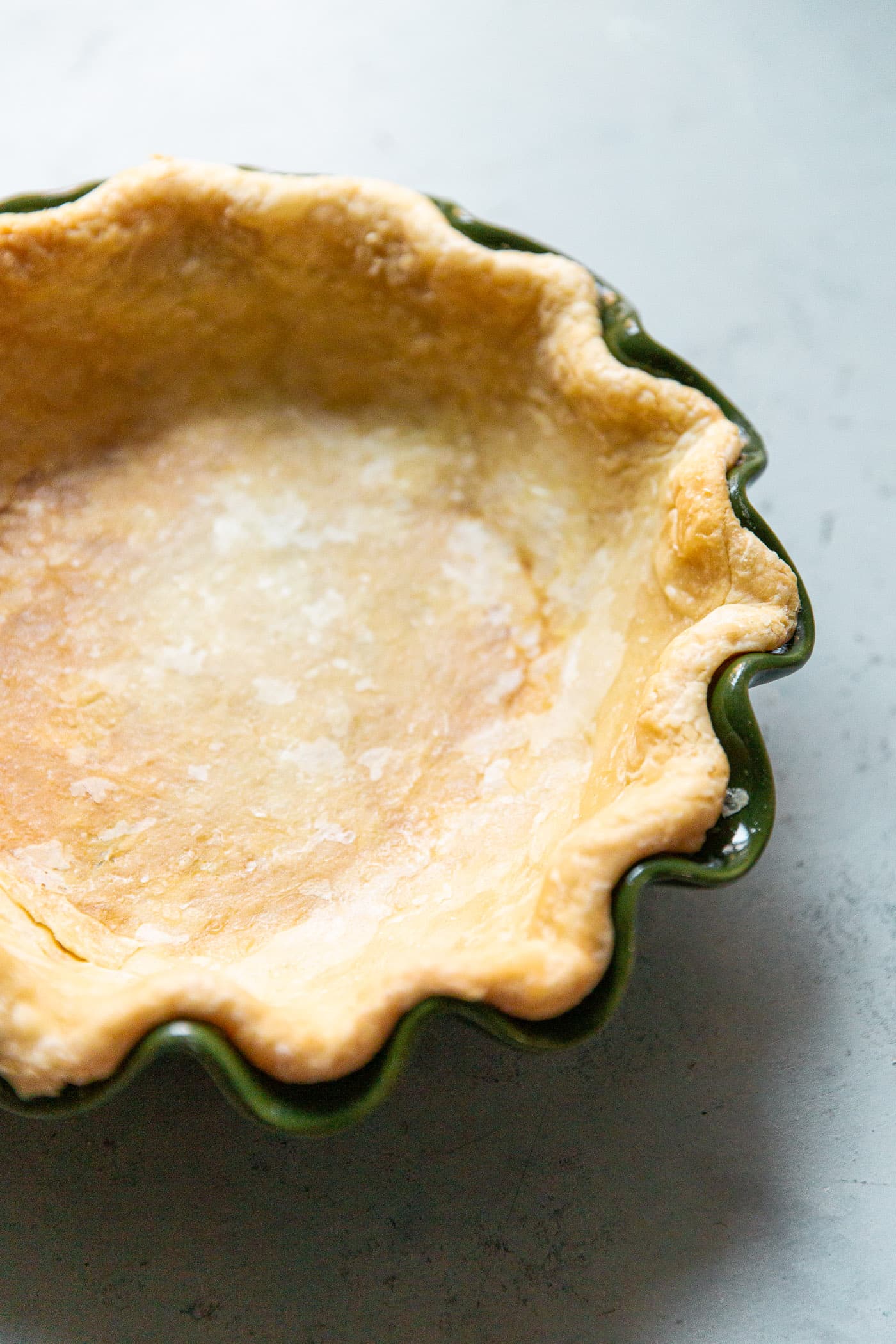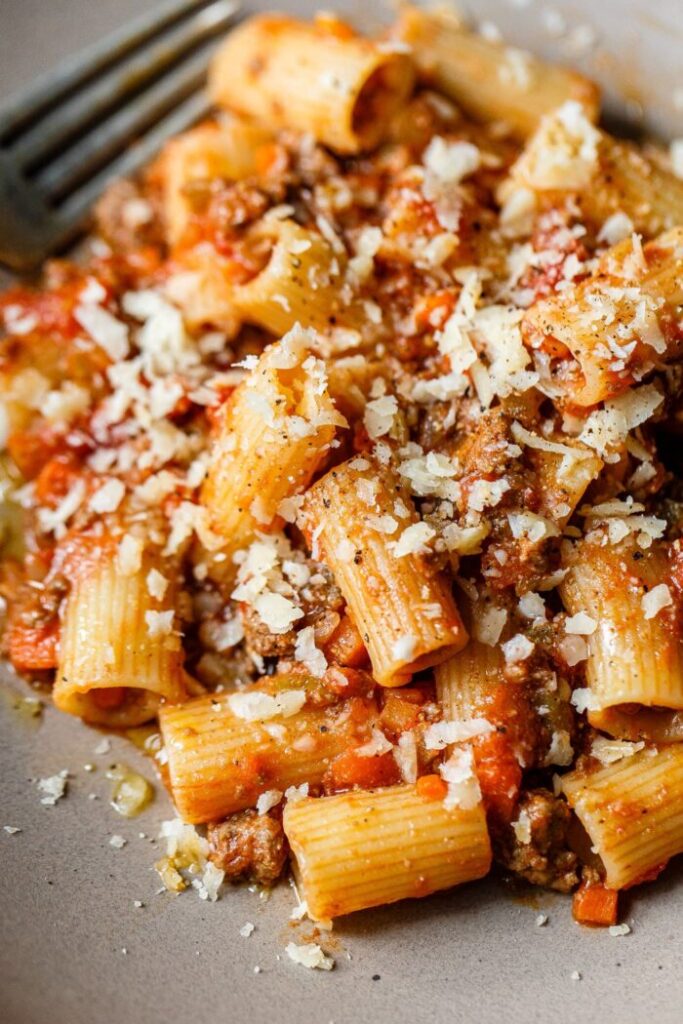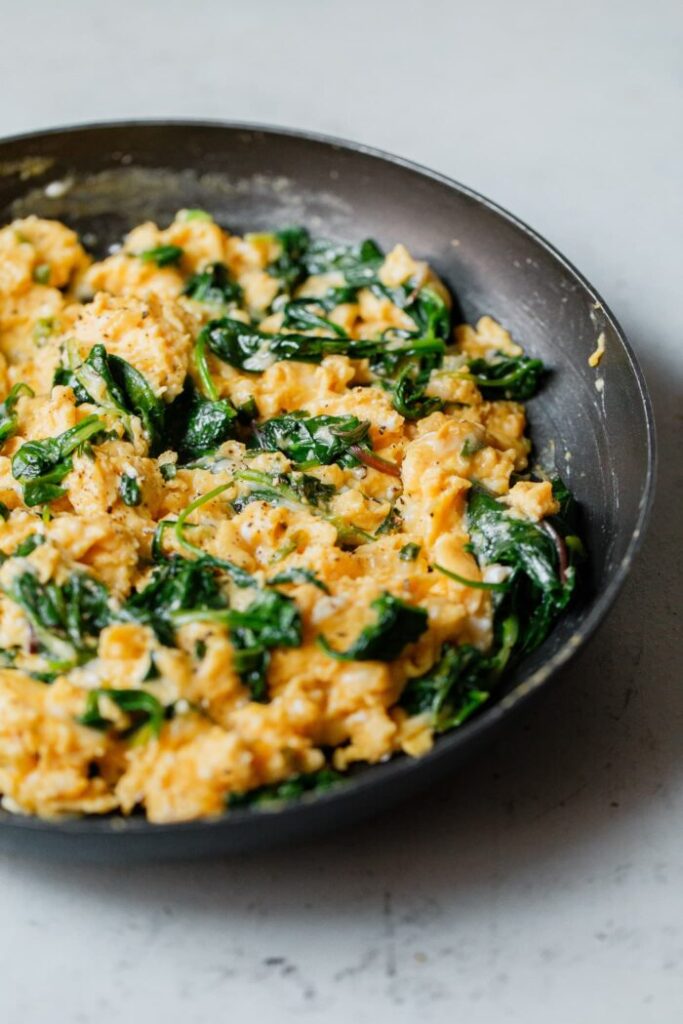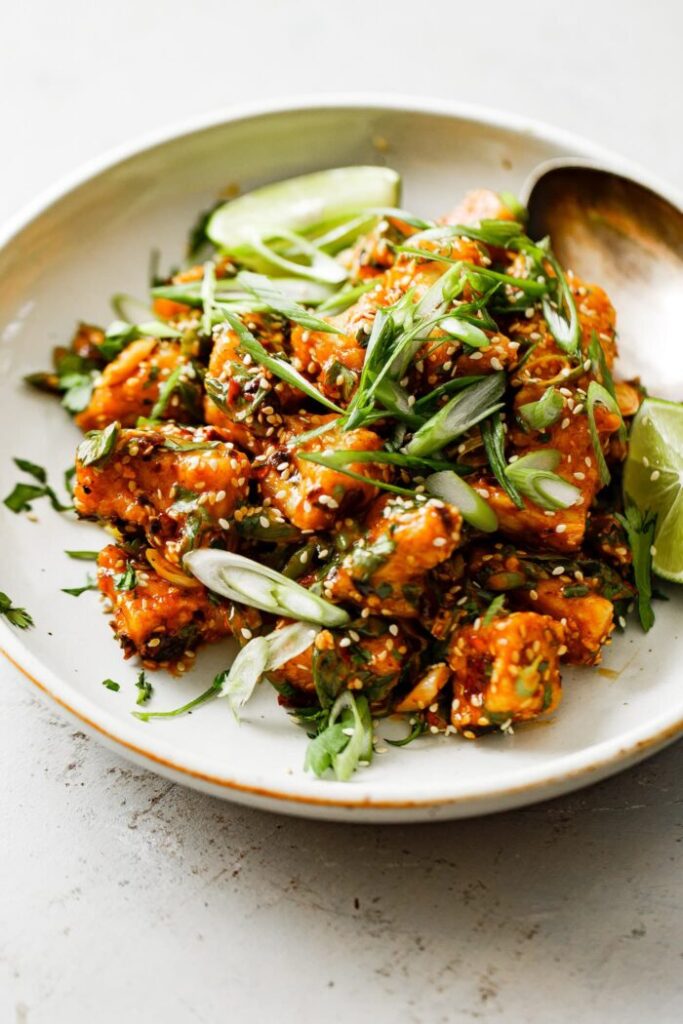Flaky Quiche Crust Recipe
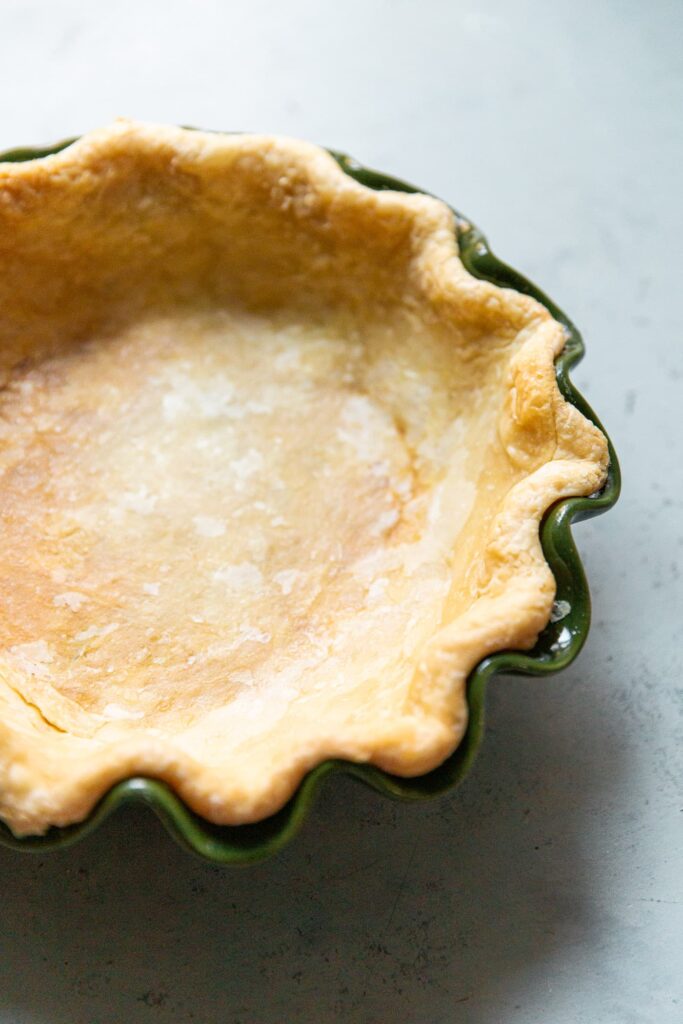
Today I’m sharing my favorite quiche crust recipe, along with various methods for preparing the dough. Feel free to choose the method that suits your preference or the equipment you have at hand.
Use this recipe and method for your favorite quiche recipes, including this Gruyère Leek Quiche.
What Sets This Recipe Apart:
Inspired by Stella Parks, this quiche crust relies on a single extended pre-bake, often known as a blind bake. This genius method eliminates the need to dock the dough or juggle two separate baking periods.
The outcome? An exceptionally flaky, sturdy crust that holds its shape and won’t shrink or puff up.
PRO TIP: While this article is tailored for homemade quiche, feel free to apply this recipe and technique to any savory pie of choice.
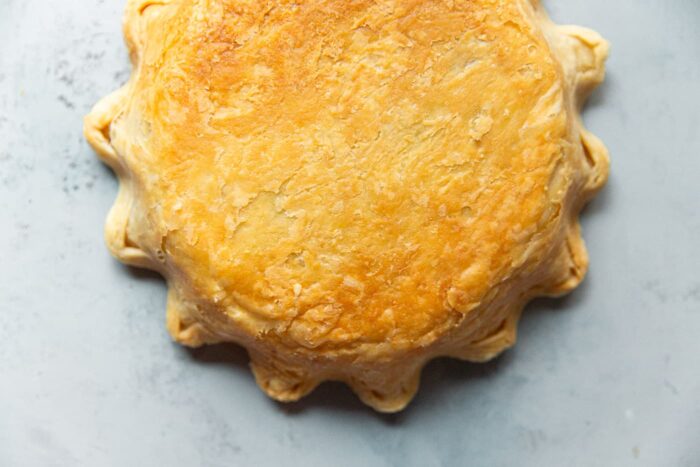
Quiche Crust Ingredients:
The magic of a flaky quiche crust lies in its simplicity. Here are the ingredients you’ll need:
- ALL-PURPOSE FLOUR: its moderate protein content strikes a balance, allowing for structure while preserving tenderness, resulting in a flaky and tender quiche crust.
- SALT: enhances the crust’s flavor. I recommend Diamond Crystal Kosher Salt, my preference for cooking and baking, but have included weight here. We’re going for 2% by weight (relative to flour). If using other salt brands, halve the quantity to account for higher density (read this article on cooking salts for more information).
- UNSALTED BUTTER: this recipe is for an all-butter quiche crust, which produces a superior-tasting pastry.
- ICE WATER: water brings the dough together while keeping it cold. Gradually add ice-cold water to your dough mixture until it’s just moist enough to hold together.
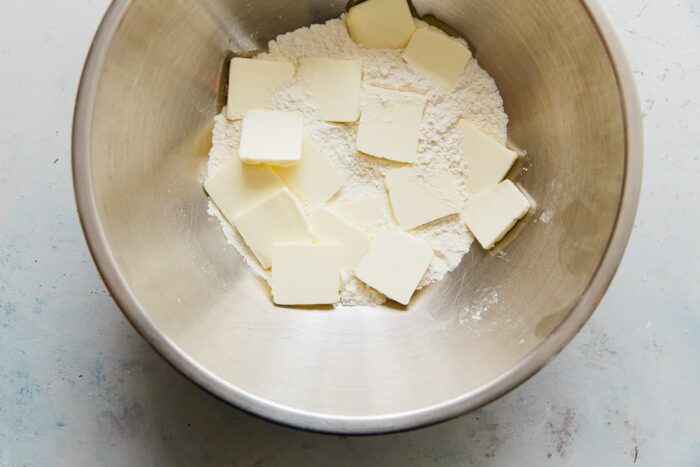
Tips for Success:
- Keep Everything Cold: cold ingredients are of the utmost importance for flakiness. From butter to flour and water, the colder, the better.
- Master Technique: the technique of cutting cold butter into flour matters. Explore my favorite method (as well as three alternate methods) below, each with unique benefits.
- Handle Water with Care: the goal is to bring the dough together, while minimizing gluten development (which can result in a chewy crust). The dough shouldn’t crumble or feel dry, but it should never be wet.
- Rest and Chill: after preparing the dough, wrap it tightly and refrigerate for at least 30 minutes before rolling. This resting period chills the dough and allows the gluten to relax, which makes rolling it out much easier.
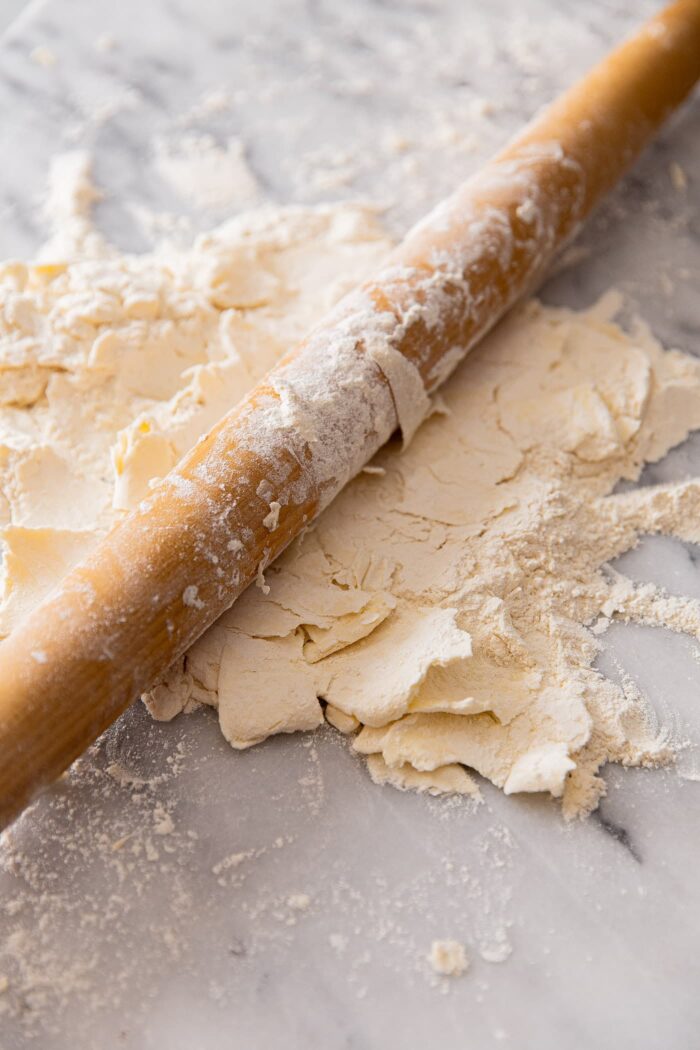
How to Make Quiche Crust:
Here’s the exciting part – there are a variety of methods to prepare the quich dough. After testing many methods, I’ve determined that rolling in the butter, yields an extra-flaky crust and offers greater control. Feel free to experiment with these methods to find your personal favorite!
- Rolling in the Butter: This approach utilizes a rolling pin to create layers of butter within the flour mixture, results in a supremely flaky quiche crust. This method requires minimal equipment and offers a tactile experience.
- Stand Mixer: For those looking for a hands-off approach, a stand mixer with a paddle attachment is a great alternative – and provides more control than the food processor method outlined below.
- Food Processor: If you prefer a convenient, time-saving method, a food processor is a good option. Pulse the cold butter and flour mixture until the butter is no larger than pea-sized. Add ice-cold water gradually while pulsing until the dough just begins to form clumps.
- Box Grater Method: This newer technique involves grating the cold butter with a box grater. While it distributes the butter quickly with minimal clean-up, in my experience, it doesn’t produce as flaky a crust.
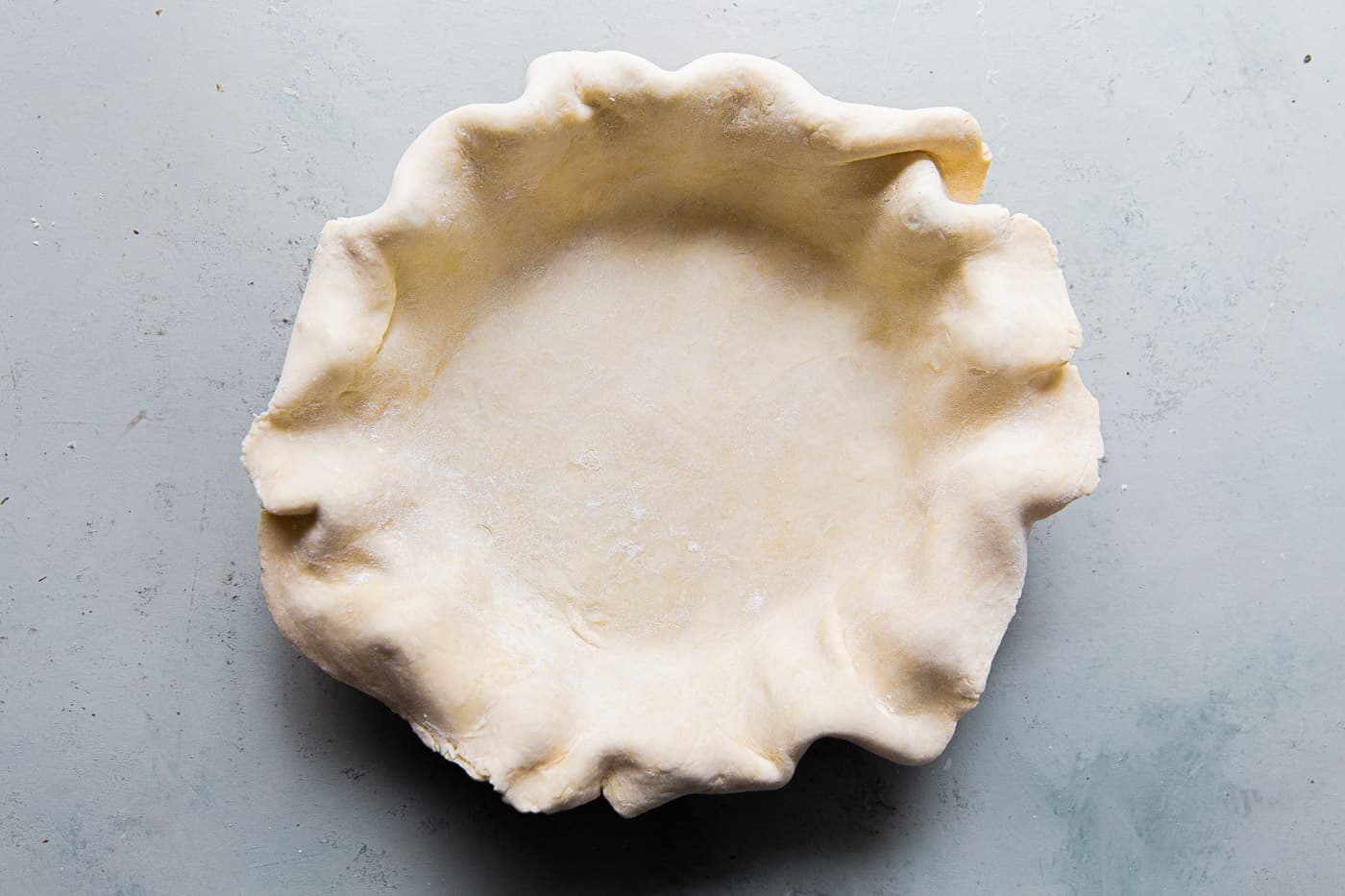
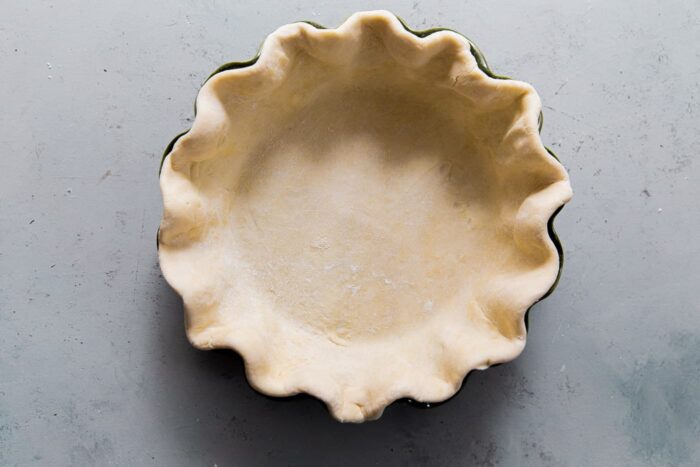
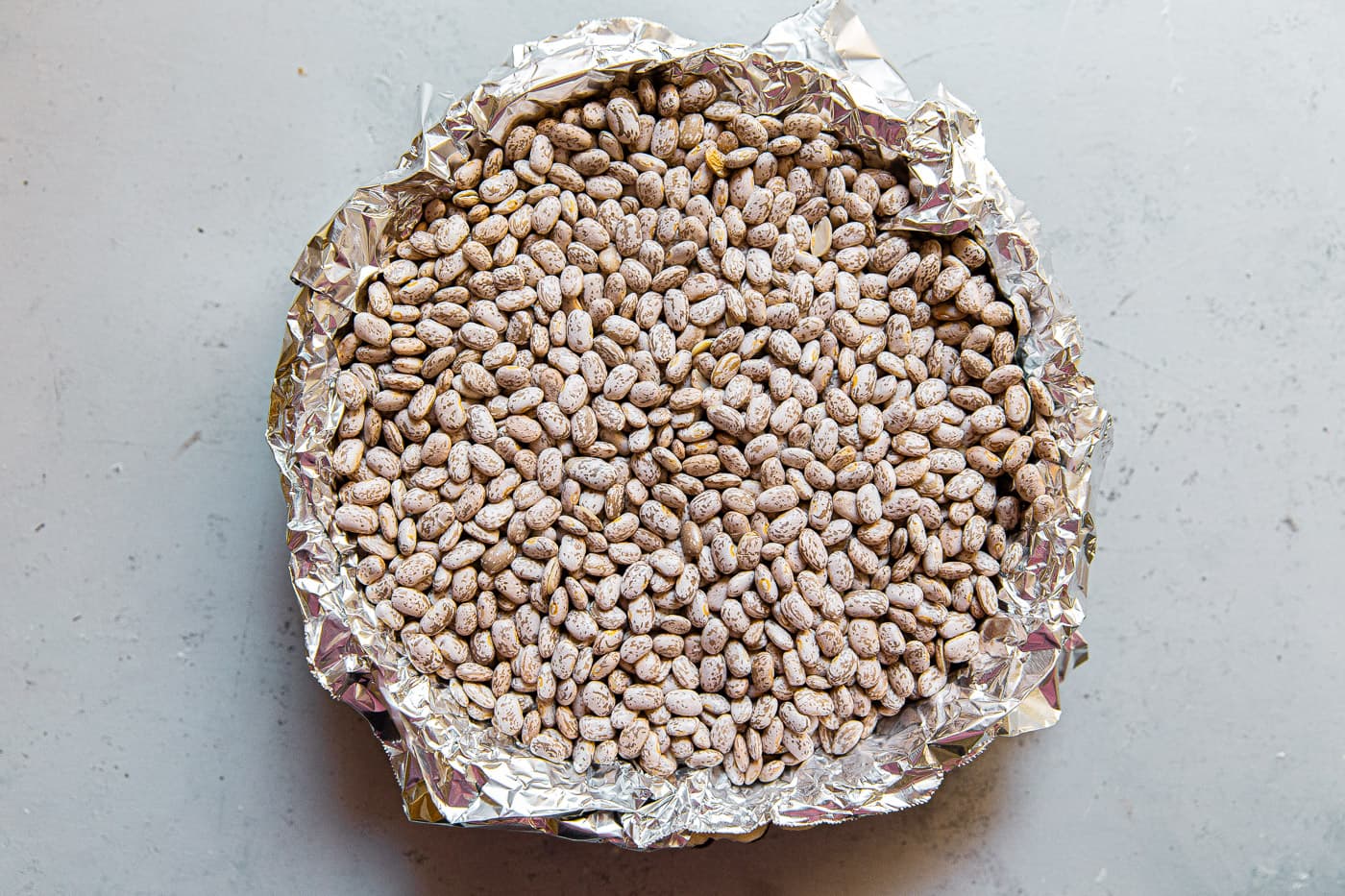
How to Pre-Bake (Blind Bake) Quiche Crust:
Pre-baking, or blind baking, means to fully bake a crust. This is a critical step for custard fillings. It prevents a soggy bottom and enhances crispness. This method utilizes a frozen crust and an extended (covered) pre-bake, here’s how to do it:
- Line and Weigh Down: Preheat the oven with a rack in the center position to 375°F (190°C). Remove the pie pan from the freezer, discarding the plastic wrap. Line with lightly greased aluminum foil – shiny side facing out (if using non-stick foil, skip greasing). Be sure to fully cover the edges of the dough. You will most likely need to use two sheets of foil. Fill all the way to the top with dried beans. This holds the dough in place and prevents shrinking and puffing.
- Extended Bake: Place the pan on a rimmed sheet pan and bake until the edges are crisp, lightly golden, and the bottom is dry and crisp, about 55 to 70 minutes. Note: I recommend checking on the crust after 45 minutes – do this by gently pulling back one edge of the foil to check the crust and bottom . Continue baking, checking the crust every 10 minutes, as needed. The time can vary depending on dough thickness and the material of your pie pan.
- Remove Weights and Cool: Carefully lift the foil with the beans and set aside in a bowl to cool (you can re-use the beans over and over again!). Set on a rack and allow the crust to cool. It can be lukewarm, but should not be hot when you add the filling.
Ingredients
Crust:
- 1 9-Inch Prebaked Quiche Crust
Filling:
- 1 large leek, white and light green parts only (200g) sliced lengthwise and thinly sliced
- 1 tablespoon (15g) unsalted butter
- 1 tablespoon (15 ml) extra virgin olive oil
- ½ teaspoon kosher salt
- 2 ounces (60g) grated Gruyère cheese
Instructions
- 1 Note: This recipe requires a 9-inch prebaked quiche crust that is on the deeper side. You can prepare this quiche using a shallow tart or pie pan, but it will most likely not accommodate the full volume of custard prepared in this recipe. You can reduce the custard (using the ratio of 1 whole egg: ½ cup cream) or leftover custard can be baked in a ramekin (to produce a crustless quiche!) at 325°F (165°C) until just set.
- 2 Preheat the oven to 325°F (165°C) with a rack in the center position. Place the prebaked quiche crust on a rimmed sheet pan and set aside.
- 3 Sauté the Leeks: In a medium skillet, heat the butter and olive oil over medium-low heat. Once the butter has melted and is lightly bubbling, add the sliced leeks and sprinkle with ½ teaspoon kosher salt. Cook, stirring often, until the leeks are soft and tender, about 10 to 12 minutes. If the pan gets dry and they are beginning to gain color, add a small splash of water as needed. Transfer to a small bowl to cool while you prepare the custard.
- 4 Prepare the Custard: In a medium bowl, combine the eggs, heavy cream, Dijon mustard, salt, and nutmeg. Whisk until smooth.
- 5Assemble and Bake: Sprinkle the grated cheese onto the bottom of the prebaked crust. Distribute the sautéed leeks in an even thin layer on top. Pour in the egg custard – it should just about reach the top. Carefully transfer to the oven and bake for 40 to 55 minutes or until lightly golden and the custard is set, but still has the slightest jiggle in the center. Set on a wire rack to cool for 10 to 15 minutes before slicing. Serve warm or at room temperature.
Ingredients
- Make this recipe your own. Swap leeks for other sautéed or roasted vegetables, such as mushrooms, broccoli, asparagus, and more. Add crispy pancetta or bacon (. Experiment with fresh herbs, such as dill, parsley, or fresh thyme. Just keep a similar volume and be sure to cook down (sauté or roast) any fresh vegetables to minimize their water content.
Substitution Notes:
- Heavy cream boasts a fat content exceeding 35%, significantly higher than whole milk’s meager 3.5% fat. This difference matters, particularly for egg custards. Opting for whole milk or a milk-cream combo is, of course, possible, but will not deliver the best texture or flavor. [Note: This is a classic French quiche, not a light frittata.] Our goal is to make an authentically classic quiche that is exceptional in taste and texture, making the effort and time invested worthwhile.
